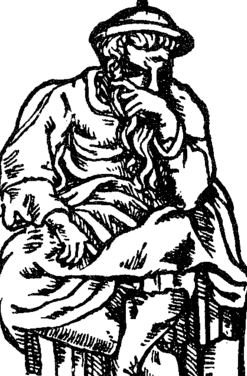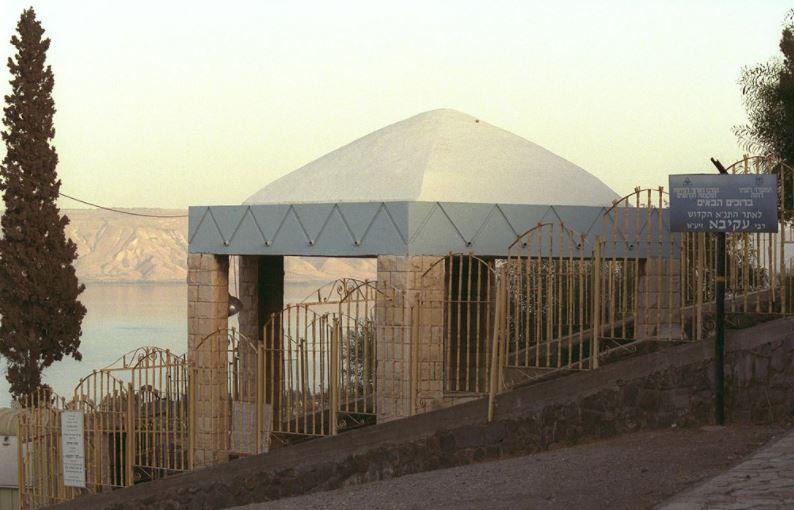The Miracle Worker
Rabbi Meir (2nd century CE) was born in what is today Turkey to a family of Roman converts to Judaism. He was descended from the Roman Emperor Nero. Rabbi Meir was one of the 24,000 students of the illustrious Rabbi Akiva. While nearly all of the students tragically perished during the Bar Kochva Revolt (132-136 CE), Rabbi Meir was one of five who survived, and the Talmud credits them with going on to revive Jewish life in the Holy Land and save Judaism from extinction. Rabbi Meir played a key role in the later production of the Mishnah, the earliest compilation of Jewish oral laws. In addition to being one of the most oft-cited voices in the Mishnah, every anonymous Mishnaic teaching is attributed to Rabbi Meir, too. During the war with the Romans, Rabbi Meir’s father-in-law, Rabbi Chananiah ben Teradion was killed, and his sister-in-law was taken captive. The Talmud relates that Rabbi Meir dressed up as a Roman officer and went past enemy lines to save her, managing to extricate her from a Roman brothel. After the war, he helped to re-establish the Sanhedrin, and was widely recognized as the greatest sage of his generation. He was also known to work miracles, and is often called Rabbi Meir Ba’al haNes, “the miracle-worker”, probably originating from the fact he was miraculously saved from numerous dangerous incidents. In fact, there is an old Jewish custom to invoke his name when in danger, saying Elokah d’Meir ‘aneni! (אֱלָקָא דְמֵאִיר עֲנֵנִי), “May the God of Meir answer me!” (Or “May God answer me like He answered Meir!”) The same phrase is recited when a person can’t find a lost object and needs help from Above. Some say “Meir” was only his nickname—because he was an “illuminator”—and his real name may have been Nehorai or Elazar. According to some sources, Rabbi Meir’s yahrzeit is today, the first of Tevet.
Government Leaders Around the World Light Menorahs
Words of the Week
An Israeli soldier bears not only a duty to enlist in compulsory military service, but is granted the zechut, privilege, to fulfill a holy commandment, a mitzva, of guarding his fellow Jews.
– Rabbi Nathan Lopes Cardozo


 Hillel (c. 110 BCE-10 CE) was born in Babylon to a poor Jewish family, descended from the tribes of Judah and Benjamin. To make a living, Hillel worked as a lumberjack. At the age of 40, he decided to move to Israel and further his Jewish studies. He went to work each morning and earned just enough to pay for his family’s needs, and for the tuition to the Jerusalem yeshiva of the sages Shemaiah and Avtalion. One winter, when he didn’t have the funds to pay the yeshiva fee, Hillel climbed up to the roof to listen in to the classes from the chimney. He was so engrossed in the learning that he didn’t realize the snowstorm that began to brew around him. In the morning, the yeshiva students noticed the clogged chimney and went up to find Hillel frozen on top of it. For his dedication, he was granted free tuition for life. Hillel went on to become the greatest rabbi in the world. He headed the Jerusalem yeshiva, and was also elected president (nasi) of Israel, and chief of the Sanhedrin. He had eighty pairs of disciples, including the famed rabbis Yonatan ben Uziel and Yochanan ben Zakkai. Hillel was famous for his incredible patience. In one account, a man made a bet that he could get Hillel angry so he bothered Hillel incessantly on the eve of Shabbat, yet Hillel remained calm and pleasant. When the man admitted to the bet and told Hillel how he lost 400 zuz, a huge sum of money, Hillel replied: “It is better that you lose 400 zuz, and even another 400 zuz, than that I should get angry!” The school of Hillel became the dominant school in Judaism, and to this day Jewish law always rules according to Beit Hillel. He is one of the most-oft cited sages in the Mishnah, the ancient corpus of Jewish law. Among his most well-known teachings is the Golden Rule: “That which is hateful to you, do not do to your fellow”, and “If I am not for myself, who will be for me? If I am only for myself, what am I? And if not now, when?” Finally, it was Hillel who instituted the prozbul: In the sabbatical Shemitah year (such as the one beginning next week), the Torah commands that all personal debts between Jews must be cancelled. Because of this, Jews started to avoid handing out loans in the months before the sabbatical, worried that they would never be repaid. To ensure that the needy could still draw loans, Hillel crafted an important legal loophole known as the prozbul, still widely used. According to tradition, Hillel lived 120 years. He stood up for the poor and oppressed, and was beloved for his kindness, charity, and positivity. The Sages would later remark that each person should strive “to be humble and patient like Hillel.”
Hillel (c. 110 BCE-10 CE) was born in Babylon to a poor Jewish family, descended from the tribes of Judah and Benjamin. To make a living, Hillel worked as a lumberjack. At the age of 40, he decided to move to Israel and further his Jewish studies. He went to work each morning and earned just enough to pay for his family’s needs, and for the tuition to the Jerusalem yeshiva of the sages Shemaiah and Avtalion. One winter, when he didn’t have the funds to pay the yeshiva fee, Hillel climbed up to the roof to listen in to the classes from the chimney. He was so engrossed in the learning that he didn’t realize the snowstorm that began to brew around him. In the morning, the yeshiva students noticed the clogged chimney and went up to find Hillel frozen on top of it. For his dedication, he was granted free tuition for life. Hillel went on to become the greatest rabbi in the world. He headed the Jerusalem yeshiva, and was also elected president (nasi) of Israel, and chief of the Sanhedrin. He had eighty pairs of disciples, including the famed rabbis Yonatan ben Uziel and Yochanan ben Zakkai. Hillel was famous for his incredible patience. In one account, a man made a bet that he could get Hillel angry so he bothered Hillel incessantly on the eve of Shabbat, yet Hillel remained calm and pleasant. When the man admitted to the bet and told Hillel how he lost 400 zuz, a huge sum of money, Hillel replied: “It is better that you lose 400 zuz, and even another 400 zuz, than that I should get angry!” The school of Hillel became the dominant school in Judaism, and to this day Jewish law always rules according to Beit Hillel. He is one of the most-oft cited sages in the Mishnah, the ancient corpus of Jewish law. Among his most well-known teachings is the Golden Rule: “That which is hateful to you, do not do to your fellow”, and “If I am not for myself, who will be for me? If I am only for myself, what am I? And if not now, when?” Finally, it was Hillel who instituted the prozbul: In the sabbatical Shemitah year (such as the one beginning next week), the Torah commands that all personal debts between Jews must be cancelled. Because of this, Jews started to avoid handing out loans in the months before the sabbatical, worried that they would never be repaid. To ensure that the needy could still draw loans, Hillel crafted an important legal loophole known as the prozbul, still widely used. According to tradition, Hillel lived 120 years. He stood up for the poor and oppressed, and was beloved for his kindness, charity, and positivity. The Sages would later remark that each person should strive “to be humble and patient like Hillel.”
